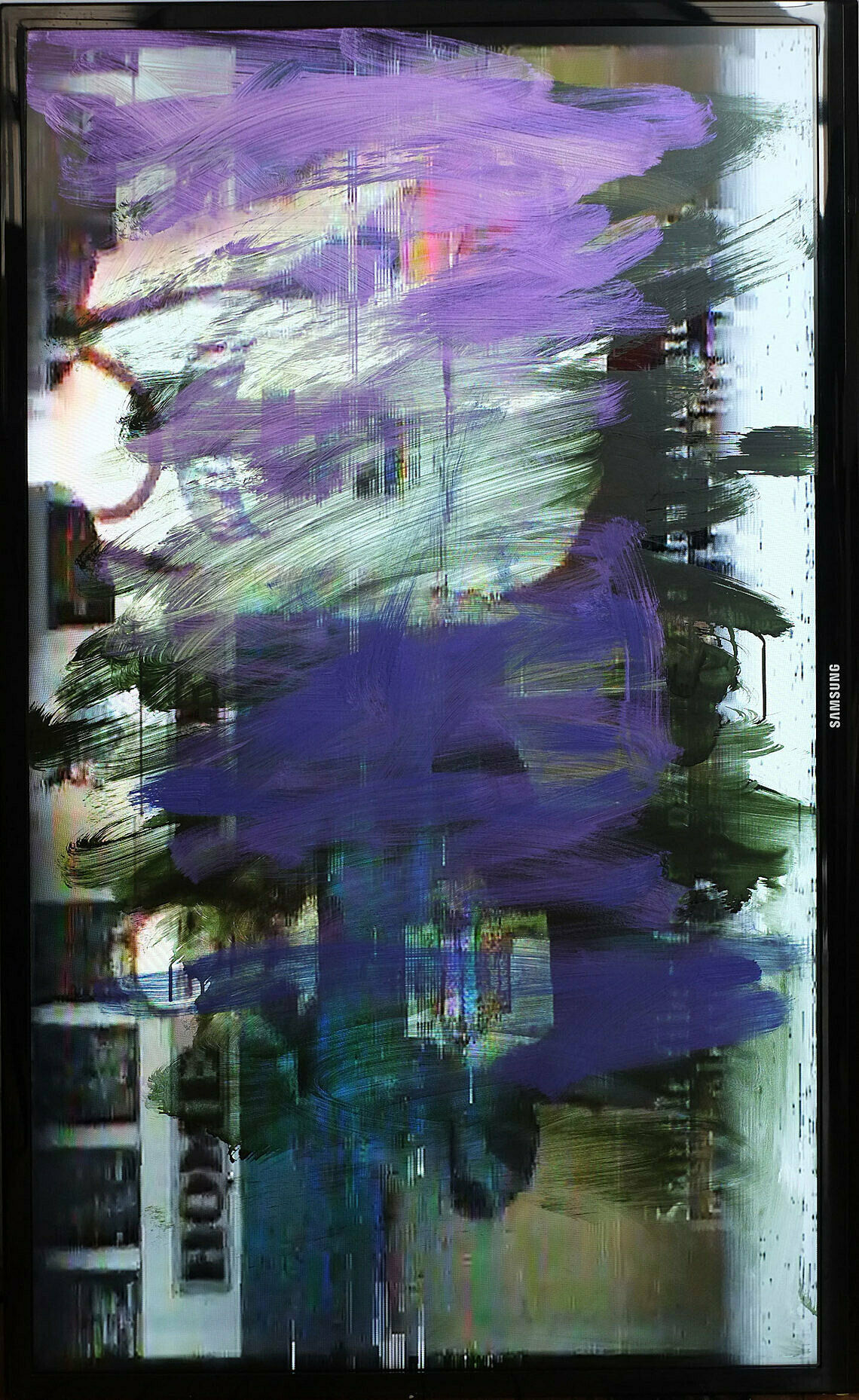Lost in Translation
Make a monoprint or a digital print
Ken Okiishi often creates works that explore the moments when language and images begin to fall apart and there are breakdowns in communication. His paintings on video screens focus on these moments of indeterminacy, changing our experience of what both video and painting can be.
a. Where do students notice language, image, and communication breakdown in their everyday lives? For example, words on signage may make the sign mean something different than originally intended, glitches when a mobile phone has poor service, garbled subway announcments, pixellation on TV screens, or the selfie function on digital phones as a mirror reflection rather than your actual self. How do our brains fill in the blanks?
b. Ask students to find and print two copies of an image that interests them. Have them use acrylic paint on acetate to make monoprints over the printouts of the images. Or ask students to print out a digital image that interests them. Use a paint program on the computer to make a digital painting. Put the original image back in the printer and print the digital painting over it.
c. Ask students to look at each others’ images. How has the information shifted, changed, or broken down? In what ways has its meaning changed?

